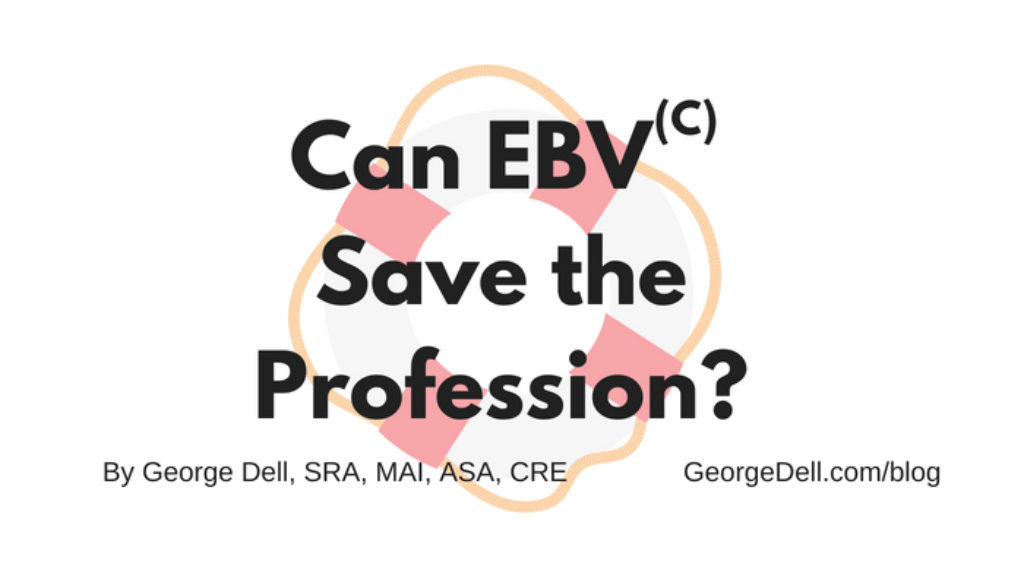Is the profession dying? Do we save it? Or change it? How does EBV © make things better? How can it be better for appraisers? For lenders? For investors? For litigation?
We have several questions. These are each worthy of a look. To this end, this will be the first of several parts, to see how Evidence Based Appraisal© (EBA) can benefit each of these parties. This part, part I of VI, considers the first two questions: What is better? And how does EBV© make things better?
To consider what is better, we must look at the presumed goals of valuation. We can dismiss this quickly by just saying “market value.” But what do those clients really want? Lenders want to know risk or safety. Investors want to know safety and potential (income or resale). The courts want to estimate damages or equitable results. Assessors want equalization, or fair taxable value as between properties. Each of these has related, but different needs. We can compare how EBV© brings results.
And what would appraisers want?
For now, let’s simplify the discussion. Generally speaking, what each wants is just three things: 1) that the result is accurate; 2) the result is precise, or relatively certain; 3) the right question was answered. We can call these trueness, sureness, and appropriateness.
EBV© is more accurate, more understandable, more informative, is reproducible, and integrable.
Accuracy. Accuracy is achieved by using as much information as possible. (Recall that information is data that has been sorted and associated to the problem). It is a core concept of EBV© that all available relevant data is included. This may be three sales, or six, or one, or forty-three sales.
Understandability. Understanding is achieved mostly through data visualization methods – primarily plots or graphs. The human brain zonks out at six or seven pieces. Visualizations easily make larger data sets understandable to the human brain. Visualization is important for the analyst, in making modeling decisions on the fly. Visualization is also important for the users of asset analytics. The appraiser, the analyst lets the data speak. In turn, the analyst helps the user see the results.
Informativeness. Information is data made useful. And there is more to analyze than just a point value – an alleged market point of the crossing of the demand and supply curves. Yes, a point value can be useful. But so much more is possible. If we recall that each of our users use the results for decisions about risk, reward, equity, and safety – then we realize that more is needed. EBV can provide a reliability score. A score which describes the sureness of the answer. EBV© can easily provide reproducibility, a core basis of the scientific method. Reproducibility can eliminate the concept of a reviewer providing an opinion of the believability of the appraiser’s opinion. Instead there is a reliability score, based on a replicable analysis. Other results are possible, such as real-time valuation, forecasting, and fundamental value. Such results can fundamentally improve portfolio management and analysis, equity decisions, litigation results, and decisioning.
Integrability. Integration of the pipeline from the raw data, to relevant data frame, to competitive market segment©, to classification and regression analytics, to client decisioning algorithms – can be seamless – a pipeline to client systems. The human brain is brought to bear only where it most effective and rational.
In Part II of this “benefits” series, we will consider how the appraiser can benefit from learning and using Evidence Based Valuation© methods – Data Science applied to asset assessment.

Devalue Market Value? Pt 2 - George Dell, SRA, MAI, ASA, CRE
March 22, 2023 @ 1:28 am
[…] now I remember demanded supply. They told me that is where the two lines cross each other in the middle. It is a point. […]